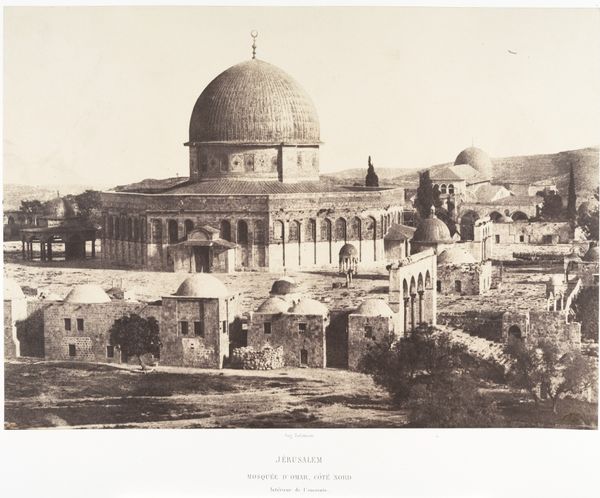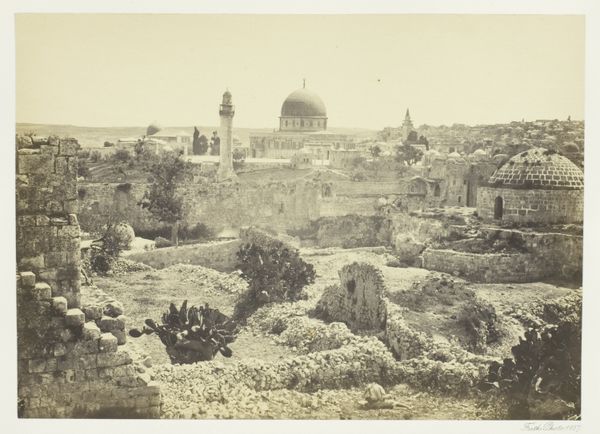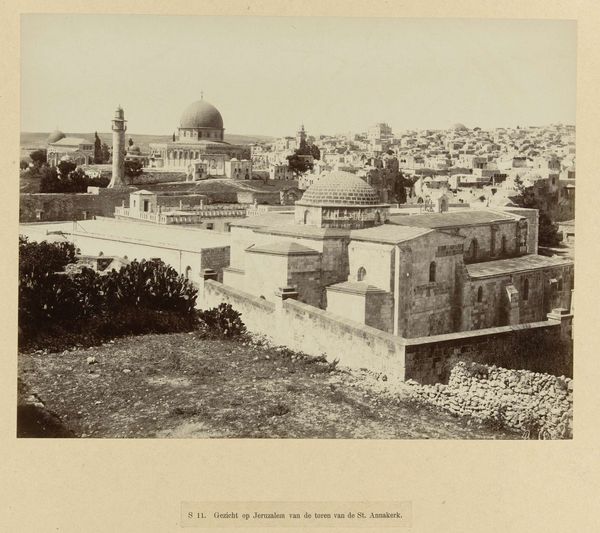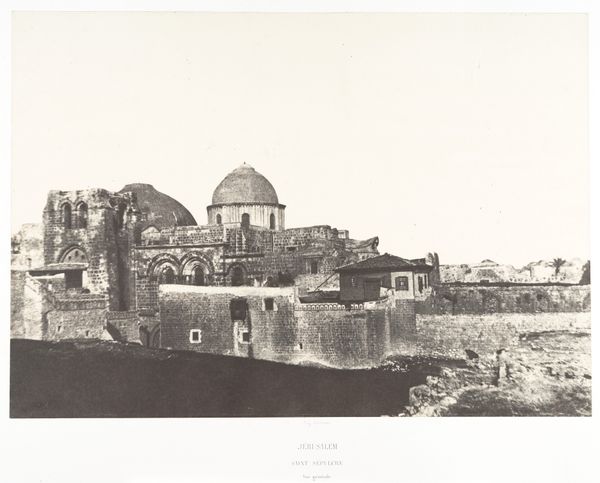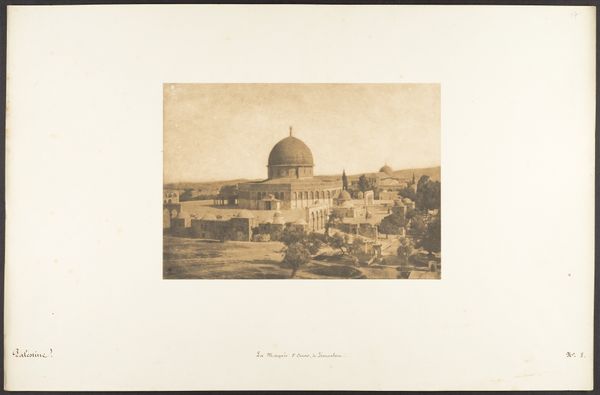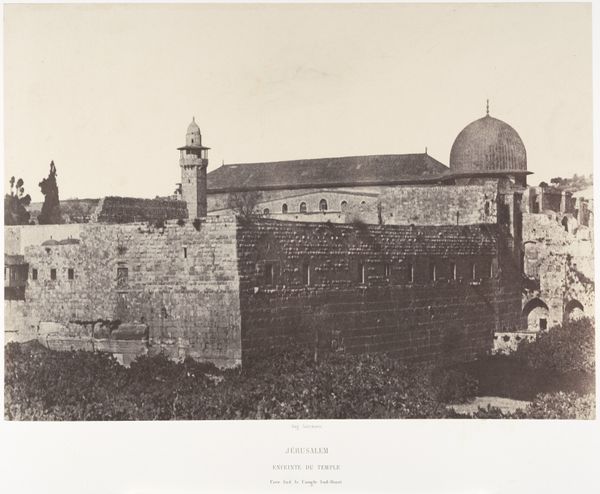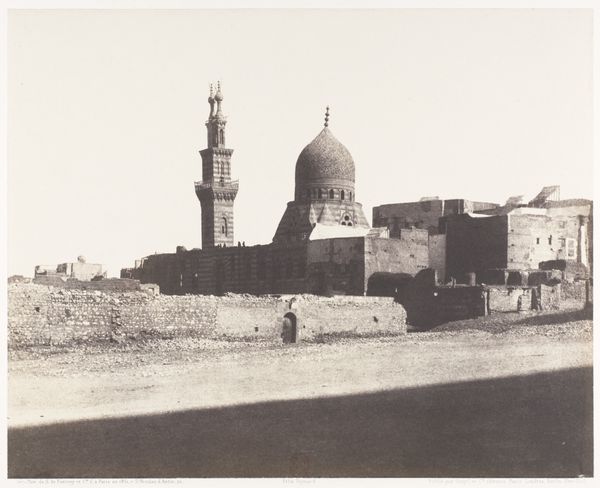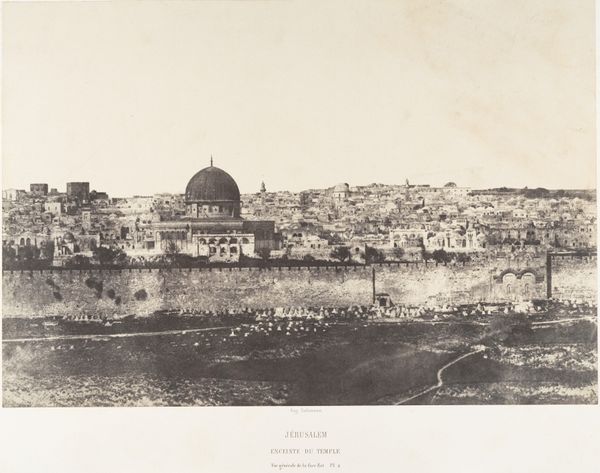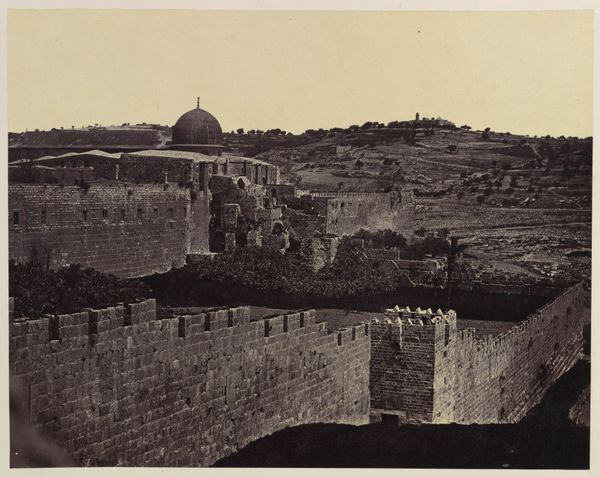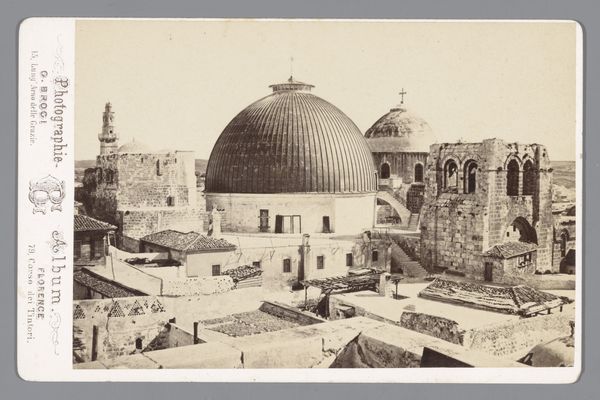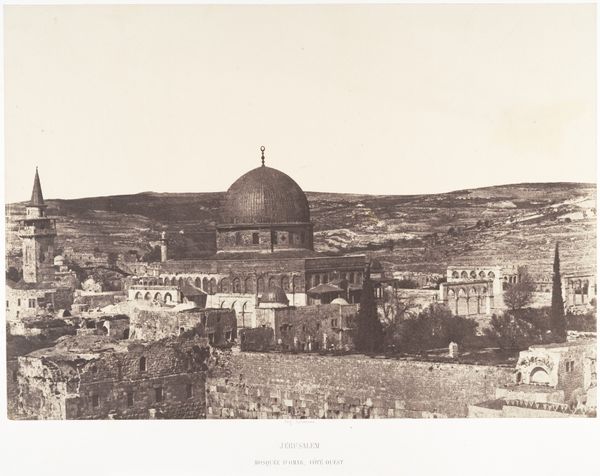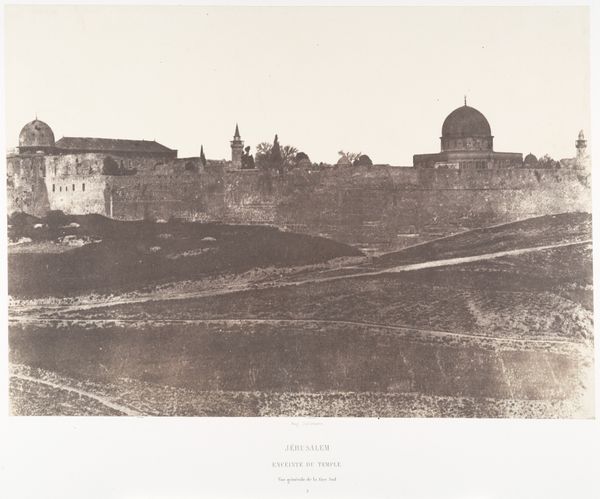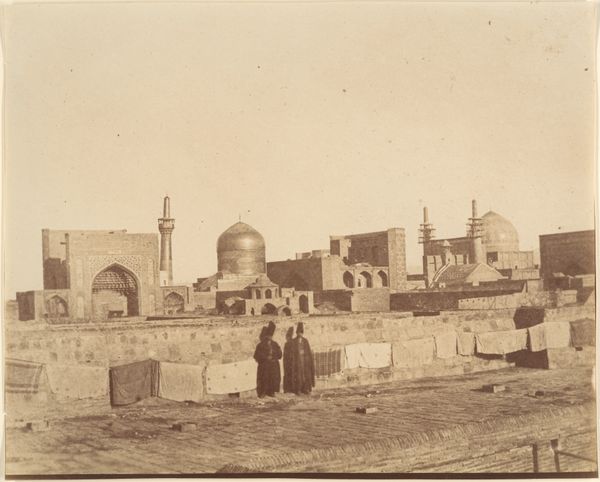
daguerreotype, photography, architecture
#
landscape
#
daguerreotype
#
photography
#
cityscape
#
islamic-art
#
architecture
Copyright: Public Domain
Curator: What a striking image of the Dome of the Rock. This is "Palestine. Jérusalem. Mosquée d'Omar," a daguerreotype created around 1850 by Maxime Du Camp. It's currently held here at the Metropolitan Museum of Art. Editor: My first impression is the sheer stillness. The tonal range of this daguerreotype lends it an ethereal, almost dreamlike quality, isolating the architecture. There's a sense of timelessness about it, a visual encapsulation of cultural memory. Curator: Indeed. As a daguerreotype, it represents a significant technological achievement of its time. The process itself is quite involved, using silver-plated copper, treated with chemicals and exposed in a camera. This early photographic technique, requiring meticulous preparation and handling, offers a remarkable level of detail. Editor: I see it in terms of how that detail creates layers of meaning. Notice the crescent moon at the apex of the dome. The photograph documents more than just stone and mortar. The moon is not merely a decorative element. The placement holds tremendous symbolic value, evoking notions of divinity and celestial guidance central to Islamic faith and culture. Curator: Absolutely. Furthermore, the very act of photographing such a significant religious site invites questions about representation and cultural exchange during the mid-19th century. Who was this image intended for? How was it consumed? It would have taken significant resources and logistical support to undertake a journey to Palestine at this time. Editor: Those are interesting angles, because the shadows, starkly contrasting with sunlit facades, underscore the inherent dichotomy. The play of light suggests spiritual illumination and revelation but simultaneously, also alludes to historical struggles over the land, echoing the psychological weight that Jerusalem carries even today. Curator: Considering Du Camp’s training with Gustave Flaubert, we could explore the link between aesthetic representation and early orientalist perceptions too. Photography was being utilized not just to record, but to shape understanding of the ‘East’ for Western audiences. Editor: Ultimately, this image, with its iconic dome, became part of the visual lexicon representing Jerusalem itself. Even in a relatively simple photograph, we witness the confluence of technology, religion, politics and the enduring power of visual symbols across time. Curator: Looking at Du Camp’s method helps reveal a perspective regarding labor, materials and the cultural dynamics inherent to art-making in the age of mechanical reproduction. Editor: And considering the symbolism, we’ve explored how the daguerreotype, with its silvered surface, captures a sacred space but also becomes a relic imbued with layers of complex and sometimes contradictory cultural meanings.
Comments
No comments
Be the first to comment and join the conversation on the ultimate creative platform.
